For over 40 years Maine has been a leader in the shellfish aquaculture industry. In the 1970s, companies on the Damariscotta and Blue Hill rivers began culturing oysters with the help of the University of Maine’s Darling Marine Center. From this work came the establishment of the first oyster broodstock and hatchery programmes, which have continued to the present day. Mook Sea Farm has been a pioneer in oyster farming since 1985. Operating along the Damariscotta River, Bill Mook has grown the company from its humble beginnings to an industry leader.
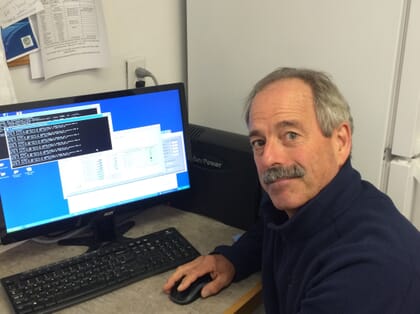
The Damariscotta is a unique growing environment for shellfish. Due to the tides, river and bottom structure there is a hydraulic residence time of sea water within the area of up to 28 days. This allows the water to reach higher temperatures than they normally would in this part of Maine, while maintaining a salinity of nearly 27 ppt (close to full-strength sea water). The clean natural water, plankton community and unique dynamics create an area that the animals thrive in.
This highlights a concept called meroir, similar to that of terroir used in the wine sector. Abigail Carroll of Nonesuch Oysters believes that this is a great example of “How much oysters reflect their environment and are sensitive to small changes in their ecosystem. These changes can have huge impact on the organisms and help shape the product.”
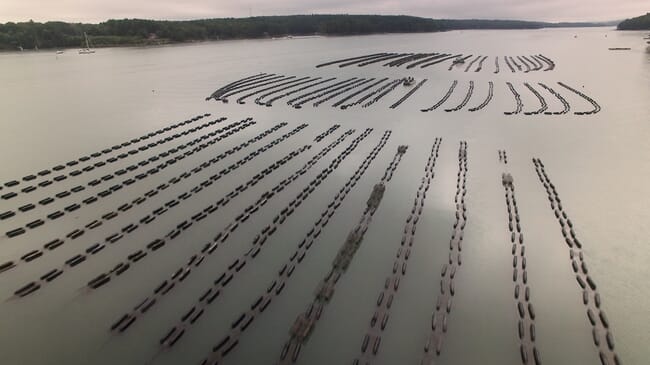
Shellfish farmed from the state of Maine are routinely rated as some of the best in the world. The Damariscotta River has been called the "Napa Valley of oysters" and GQ magazine recently named oysters from Pemaquid (near the mouth of the Damariscotta) as the best overall.
Nonesuch Oysters operates about two hours south of Mook Sea Farm, growing three distinct product lines on site. Two of the oysters, the Nonesuch Emeralds and Abigail Pearls are the same species (Crassostrea virginica) and differ only in where they grow in the water column. In one of the first shipments from the farm, a distributor called Carroll to question why there was mixed product.
“We had to explain to them that all the product came from our one and only farm site! Since then, we have marketed them as distinct products and tried to characterise their unique flavours,” she reflects.
Nonesuch also markets its Nonesuch Flats oysters which are actually a European transplant known as a Belon (oestra edulis). This species was introduced to Maine in the 1950s and are considered “newly native”.
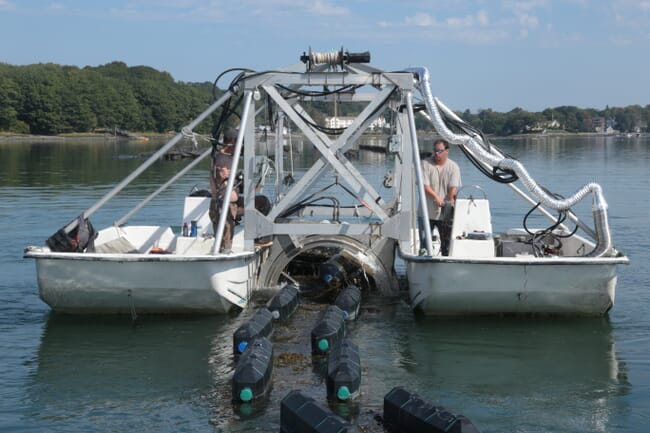
© Mook Sea Farm
Production systems
In the early days Mook Sea Farms operated by culturing oysters directly on the bottom of the river. This traditional bottom-culture technology can result in up to 50 percent loss to predation, while harvest sometimes leads to impacts on the benthic habitat. In 2012 the farm switched to using floating oyster cages, which have many benefits. Biofouling is controlled at the surface by exposing the cages to sunlight, which desiccates the fouling organisms, and the floating cages can then be turned over to repeat the process on the opposite side. The oysters are able to tolerate these interruptions, but the biofouling organisms are not. Having oysters in discrete cages also allows for more accurate inventory tracking throughout the grow-out period. The oysters benefit too, as they are in warmer surface water with more plentiful phytoplankton while still being protected from predators.
The farm does face some social opposition, which is increasing and is largely focused on visible gear at the surface, but the team are working to counter this in a project supported by the National Oceanic and Atmospheric Administration (NOAA).
As Dr Meredith White, Mook’s head of R&D, explains: “We are proposing a cage design that has the capacity to address problems related to bottom culture and floating cages such as loss to predation, biofouling and visible gear. The new cage sits on the seafloor, or on a short set of risers on the seafloor. A string of cages will be rigged together, and to manage biofouling the cages will be periodically flipped on the bottom. The side of the cage on the bottom sinks slightly into sediments to kill any fouling organisms. We’re very pleased that NOAA Sea Grant recognised the merits of the project and decided to award funding to us.”
Combating coastal acidification
At Mook Sea Farm’s Walpole hatchery the team produces over 140 million seed oysters to sell to over 100 farms from Maine to North Carolina. This part of the business was put in jeopardy due to the impact of climate change and the farm has had to adjust. In 2009 the farm experienced larval production issues that they ultimately linked to low pH and coastal acidification. The Gulf of Maine region is experiencing climate change faster than many of the world’s oceans, and water conditions that affect carbonate availability and pH are critical to growing oysters. Within the hatchery, incoming water is now monitored and actively buffered to give spat and juveniles the best chance to reach maturity.
“This summer we were engaged in a research project funded in part by SEANET to determine the effects of coastal acidification on seed oyster calcification rates and gene expression. We are collaborating with Heather Hamlin’s lab at the University of Maine for the gene expression work, and with Nichole Price at Bigelow Laboratory for Ocean Sciences, who is testing whether the use of ground-up oyster shell may mitigate the potential negative impact of coastal acidification on seed calcification by helping to buffer the water. Finally, this project will also provide data to validate a dynamic energy budget developed by the NOAA National Marine Fisheries Laboratory in Milford, Connecticut. This project is very important to us because it will help us better understand how seed are affected by coastal acidification after they leave the controlled conditions of the hatchery. We are also engaged in monitoring of our hatchery intake seawater to document seasonal and long-term trends in water chemistry.”
Improvements in oyster feed
Traditional oyster production requires the farmer to grow the spat and juvenile oysters on land until they are sufficiently large and robust to tolerate grow-out in the natural environment. As the young will only consume live feed, this means that their food must also be grown at the facility. Traditionally, oyster nurseries culture autotrophic algae with expensive lighting systems. A source of CO2 is required, and the space needed to grow the food can be considerable.
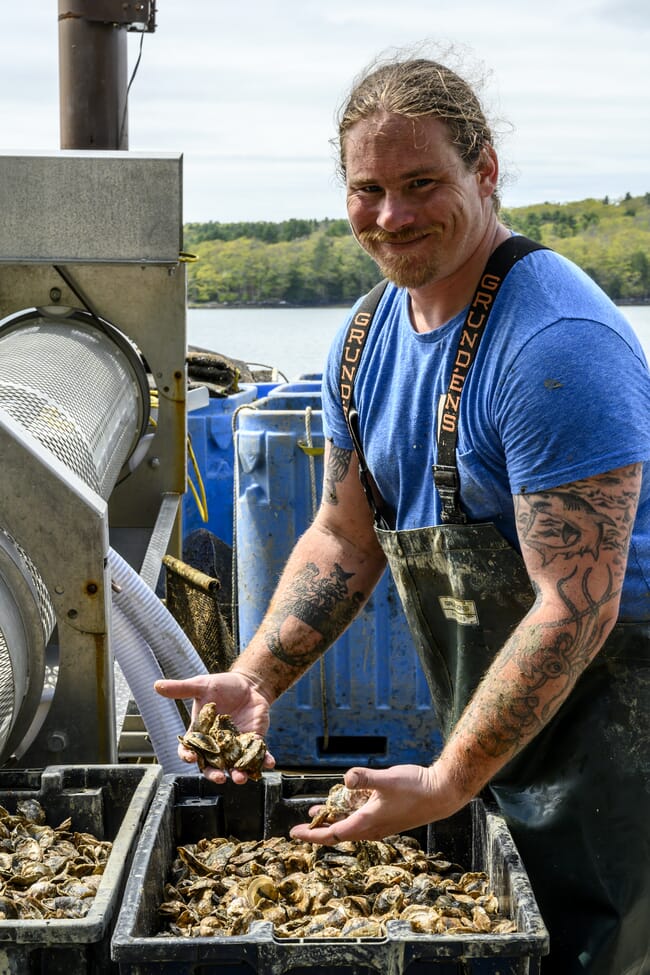
The team in Walpole decided to take a fresh look at feeding oysters and has begun working with a new, proprietary process that allows them to decouple the growing of food from the hatchery, while also creating a new revenue stream for the farm.
“By growing heterotrophic algae at our facility, we are not limited by light blocking that occurs at the higher densities within autotrophic systems. Our only input here is a carbohydrate for the algae, and we can achieve much higher densities of feed for the oysters without the need for expensive, heat-producing light fixtures,” says Dr White. “To produce enough food for all the oysters we have here, and that we plan to have in the future would require football fields of autotrophic culture! This new process allows us to save on space, energy in lighting (and cooling of the lighting), and the real benefit is that these heterotrophic algae can be concentrated and frozen.”
In this way, feed can now be grown, stockpiled and stored in a way that shellfish farmers have not previously been able to do. The algae remain viable throughout the freezing and thawing process, and the oysters readily consume them. This has the potential to allow Mook Sea Farm to diversify their revenue stream by selling feed to other hatcheries or farms. Other farms would potentially no longer need to grow their own food and invest in all the necessary infrastructure that algae cultivation requires.
Depuration station
A larger investment was made in response to the region’s increased rainfall, which is thought to be linked with climate change. As Dr White reflects: “Maine is experiencing increased overall precipitation and increasingly heavy precipitation. Areas are closed during these periods under the assumption that the extra runoff will bring harmful bacteria into the water.”
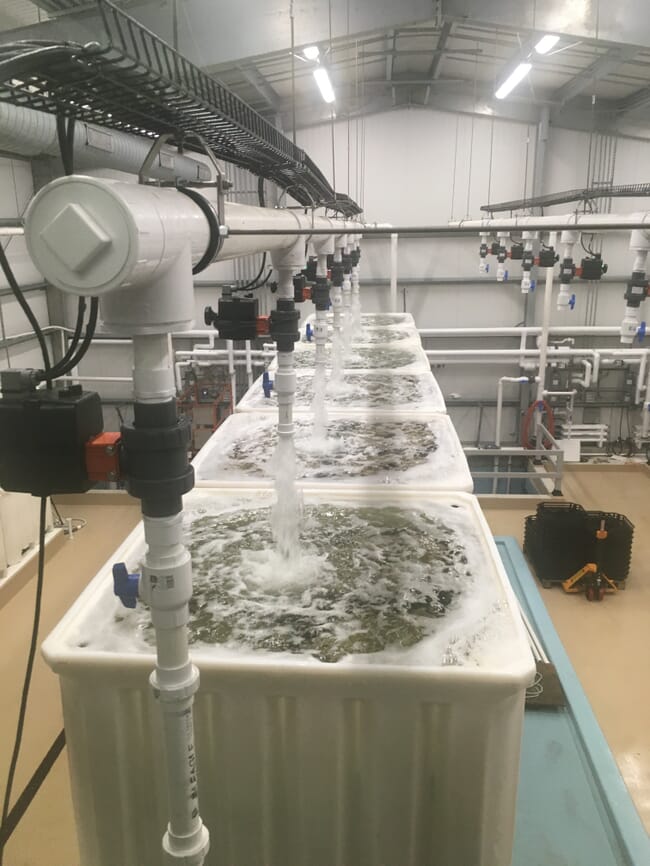
Only after the state conducts its bacterial testing and gives approval are the shellfish allowed to be harvested. The sea farm reacted by constructing a land-based holding area.
“We call it our oyster inventory room. It has capacity for 500,000 market-sized oysters and allows us to shut off the flow of outside water during a rainfall closure. These animals are held in recirculated, UV-sterilised water at cold temperatures and optimised pH and salinity levels and it allows for harvest, even during a closure.”
This unique capability lets the farm take oysters off lease sites and hold them in this recirculating technology within a few days of being aware of a large incoming rain event. As the growing environment reacts to these large weather episodes, the market-sized oysters are protected within the inventory room and the farm can continue its weekly shipments – on time and on schedule.
Looking ahead
The farm is challenged, like many in the industry, to meet the enormous demand for its product. As Bill Mook says: “We are looking to produce as many as 4 million market-size individuals this year, but people want more. We are playing a large role in Maine’s working waterfront but there are challenges, including social resistance to coastal waters use.”
“It becomes difficult to get enough lease space to meet the demands of the market because wealthy landowners do not like the visual appearance [of the oyster cages],” he adds.
The innovative and ever-changing team in Walpole continues to work to meet those demands, and as of now the future is bright.

